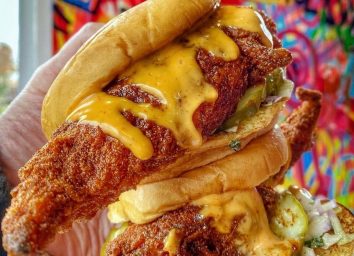Is Chipotle On the Decline? An Investigation
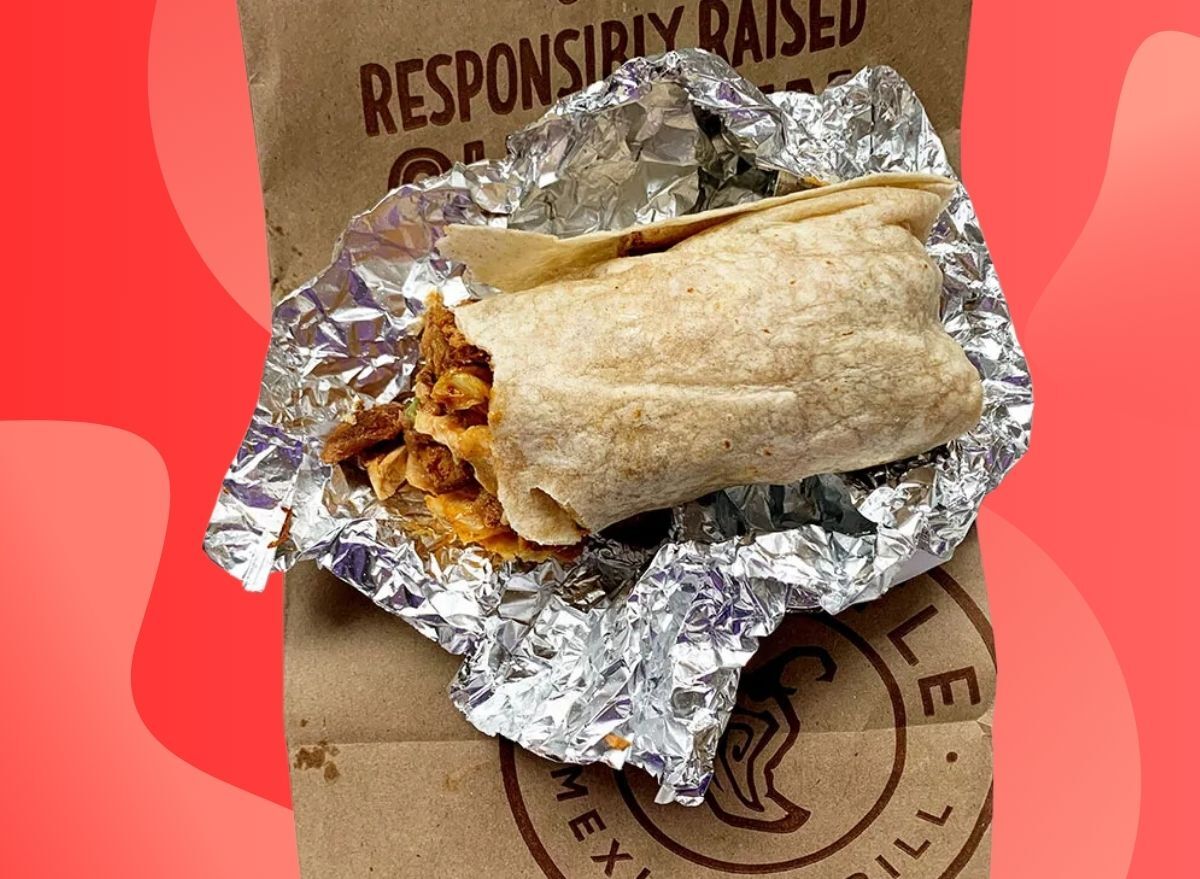
"It was revolutionary."
That's how longtime fan Benjamin Shifrin described Chipotle as it was when he initially discovered the Mexican-inspired chain over a decade ago.
"Looking back, I think what I really liked was the freshness of it when I first started going there. It felt really authentic," he said, adding, "the guacamole was the best I've ever had."
Those qualities—from the fresh ingredients to the beloved guacamole—were only part of what made Chipotle so unique when it burst onto the restaurant scene more than 30 years ago.
Chipotle was one of the first-ever fast-casual chains, offering slightly more upscale food than fast-food joints without the full table service you'd get at a sit-down restaurant. The menu was short but highly customizable thanks to the cafeteria-style assembly lines of fresh ingredients found in Chipotle stores. The portions were absolutely massive. The prices were relatively low. The open kitchens allowed customers to watch their food being prepared. Moreover, through its "food with integrity" mantra, Chipotle adopted a much stricter stance on ingredient quality than many rival restaurant chains.
Chipotle buys tens of millions of pounds of local fresh produce every year. It shuns added flavors, colors, and preservatives. Its beef and chicken are raised completely without antibiotics. Plus, Chipotle touts that its entire menu only uses 53 ingredients—and proudly displays all of them on its website.

In other words, Chipotle was fresh, affordable, consistently good-quality, transparent, and according to many, delicious. The chain quickly developed a devoted fan following and has skyrocketed in success to become one of America's largest restaurant chains.
But despite Chipotle's continued domination in the restaurant industry, some of the things that customers once loved about it have reportedly changed—and not for the better. Shifrin, for one, complained about "inconsistent" portion sizes and quality, as well as rising prices.
"They've been increasing their prices so much, but it's still very inconsistent. Why are you caring so much about prices and not caring about consistency with your quality?" he told Eat This, Not That!
Many of his fellow customers on social media seem to agree. In TikTok videos racking up tens or even hundreds of thousands of likes, customers have similarly complained about inconsistencies in Chipotle's once steadfast quality, the elevated price tag, and perhaps most of all, the portions. Even famous TikTok food critic Keith Lee—who has collaborated with Chipotle in the past and raved about its food—reviewed the chain in May and concluded that "something has changed."
While Chipotle maintains that its portion sizes have not changed, customers who believe otherwise have even recently started filming (or pretending to film) workers making their orders in the hopes of getting more food. This trend took off after social media rumors began circulating that Chipotle sent out a memo instructing workers to give bigger portions to customers who film. Chipotle has denied doing so, but the chaos still underscores all of the uproar surrounding the chain nowadays.
So how did Chipotle go from a chain once lauded as filling and affordable to one that customers now say is on the "decline?" Read on for my deep dive into that question.
Chipotle's Meteoric Rise
Chipotle founder and former CEO Steve Ells attended the Culinary Institute of America in Hyde Park, N.Y., and then used a loan from his father to open the first Chipotle in Denver back in 1993. Inspired by the taquerias he visited in San Francisco's Mission District, Ells focused on serving fresh food with speedy service and affordable prices, according to a brief history shared by Chipotle.
Though he originally opened Chipotle to raise funds for a fine-dining restaurant, Ells' concept took off. He opened the second Chipotle in 1995 and the third in 1996. As of March 31 this year, the chain boasted a whopping 3,479 locations.
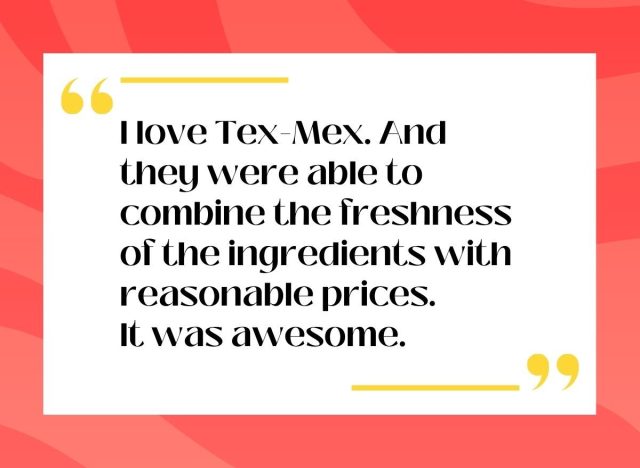
One of the ways that Chipotle stood out from many of its rivals—at least at the beginning—was its simple yet highly customizable menu. Customers start by choosing either a burrito, a bowl, tacos, a quesadilla, or a salad. Then, they add all of their favorite fillings and toppings. (Think rice, beans, fajita veggies, proteins, salsas, guacamole, sour cream, lettuce, and queso.) Adding, guacamole, queso, and double portions of meat will all result in extra charges alongside the base price of your burrito or bowl.
There are plenty of other fast-casual chains with similar business models out there nowadays, from Qdoba to Cava. But as a fast-casual pioneer, Chipotle's novelty gave it an advantage in attracting customers in its earlier days.
"I used to be excited to go to Chipotle," Shifrin, a Chicago-based data analyst and Chipotle customer of more than 10 years, told Eat This, Not That! The fact that Chipotle effectively "started it all" for fast-casual restaurants was a huge part of its appeal, Shifrin added.
It wasn't just the fast-casual format that drew him to Chipotle, however.
"I love Tex-Mex. And they were able to combine the freshness of the ingredients with reasonable prices. It was awesome," he said.
Sandra Del Prete, a former school bus driver and Chipotle customer from New Jersey, was also initially drawn to the chain because of the freshness of its ingredients. She began eating there sometime around 2018.
"I always felt that the chicken was fresh, the vegetables were fresh, and the chips were also very good," she told Eat This, Not That! "It was a treat."
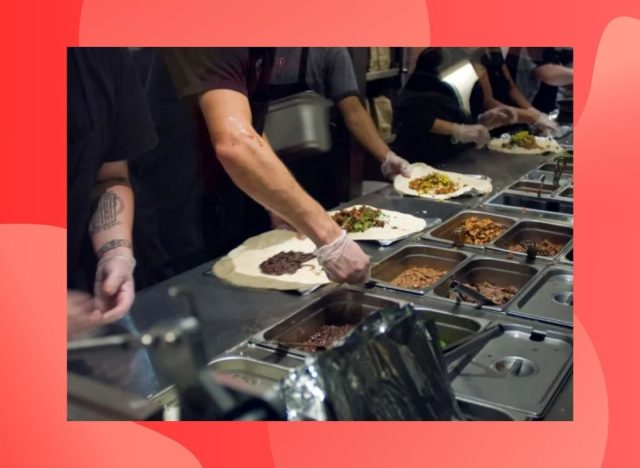
Del Prete also appreciated the fact that it felt like a healthier alternative to some of the other chains out there. Of course, the healthiness of a Chipotle meal can vary widely depending on what you order. But thanks to the multitudes of customization opportunities at Chipotle, there are a variety of dietitian-approved meals at the chain.
Many customers agree that Chipotle's "peak" or Golden Age came sometime around the late 2000s or early 2010s. As one fan explained in a Reddit thread last year, that was "the perfect time when Chipotle had expanded enough to where it was quite accessible yet was super consistent. Affordable, generous portions, great consistency and quality."
But then in 2015, Chipotle was hit with a crisis that threatened to topple everything it had built.
The First Blemish on Chipotle's Record
Considering its emphasis on the quality of ingredients, it is almost ironic that the first threat to Chipotle's popularity came from food safety scandals.
In 2015, Chipotle was linked to an E. coli outbreak that sickened dozens of people across Washington and Oregon, forcing the temporary closures of 43 restaurants, CNN reported. That same year, 80 Boston College students fell ill from norovirus after eating at a Chipotle restaurant, per NBC News.
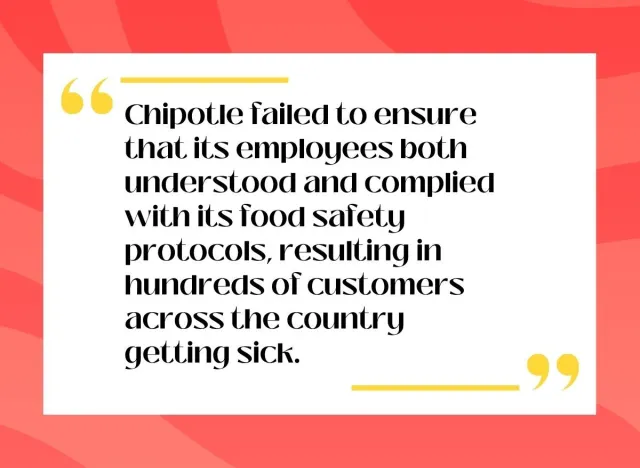
Chipotle responded to the incidents by making several changes to its food preparation methods. The modifications included marinating chicken in resealable plastic bags instead of bowls and dipping onions in boiling water to kill germs before chopping them, according to the Associated Press. However, those changes didn't completely solve Chipotle's food safety dilemma.
According to the U.S. Food and Drug Administration, more than 1,100 Chipotle customers fell ill from "adulterated" food between 2015 and 2018. Chipotle ultimately agreed to pay a $25 million fine and implement a comprehensive food-safety program to resolve criminal charges related to the incidents.
"Chipotle failed to ensure that its employees both understood and complied with its food safety protocols, resulting in hundreds of customers across the country getting sick," United States Attorney Nick Hanna said in a statement at the time. "Today's steep penalty, coupled with the tens of millions of dollars Chipotle already has spent to upgrade its food safety program since 2015, should result in greater protections for Chipotle customers and remind others in the industry to review and improve their own health and safety practices."
Such a scandal would threaten even the strongest chains, and Chipotle's profits and shares plummeted for some time in the aftermath, according to the New York Times. Despite it all, Chipotle managed to regain the trust of its customers, avoid additional food safety scares, and make a big comeback. In 2018, former Taco Bell executive Brian Niccol replaced Ells as CEO to help revitalize the company. Under Niccol, the chain saw a recovery in sales as it grew its delivery business and changed its advertising strategy, the Times reported. Thus, the Chipotle reign continued.
Customers Begin to Turn on Chipotle
Years after the food safety issues, another aspect of Chipotle's business started to falter: its rosy reputation. A quick search on TikTok brings up scores of videos, dating at least as far back as 2022, in which customers lament Chipotle's "downfall."
"I just feel like it doesn't hit like it used to," TikToker @jeanineamapola said in a viral July 2023 video.
For Shifrin, the moment that things began to take a turn for the worse at Chipotle came around five years ago. Shifrin said he's always received inconsistent portions from Chipotle, but it didn't bother him as much in the earlier days of his fanhood. That's because—at least in his experience—Chipotle wasn't as strict with adding upcharges for extra ingredients like double meat and guac in the past. But around 2019, Shifrin noticed Chipotle began charging for extras more consistently without fixing its portioning issues.
"As a consumer, I was always okay with it back five years ago when it was an inconsistent portion because it was also inconsistent pricing. But they started making you actually pay for double chicken every time, [then] never fixed the fact that you weren't actually getting double chicken," he said.
Customers who are similarly fed up with Chipotle's portion sizes have been taking to social media in droves to share pictures of meagerly filled bowls and smaller-than-desired burritos that are a far cry from what was served in the past. And according to fans, these types of issues are even more likely to occur when you order online.
"There's no way they're giving you what you order when you order online, I don't even try that anymore," Shifrin said.
The Gripes Continue to Grow
Prices are at the center of another common gripe among Chipotle customers. According to USA Today, the chain has raised its prices a handful of times in recent years, saying the hikes were meant to offset investments in more staffing and higher wages, among other factors. One of the latest price increases was a 6% to 7% hike at restaurants in California to "cover the cost" of the state's new $20 minimum wage, CFO Jack Hartung announced during an April earnings call.
Chipotle has also attributed some of the recent price hikes to its own rising costs. During the April investor call, for example, Hartung mentioned the company was dealing with elevated costs for beef and produce "inflation."
So how much, exactly, have Chipotle's prices gone up? A customer-created chart from 2013 indicates that a Chipotle burrito would have cost between $6.25 and $8.27 back then, depending on the protein choice and part of the country. Today, at my local Chipotle, a burrito starts between $9.50 and $11.25, depending on the protein choice—and the price goes up even more if I add extras like guac or an extra tortilla. In her TikTok, @jeanineamapola also recalled a time when her go-to burrito bowl used to go for $9, versus $14 in July 2023.
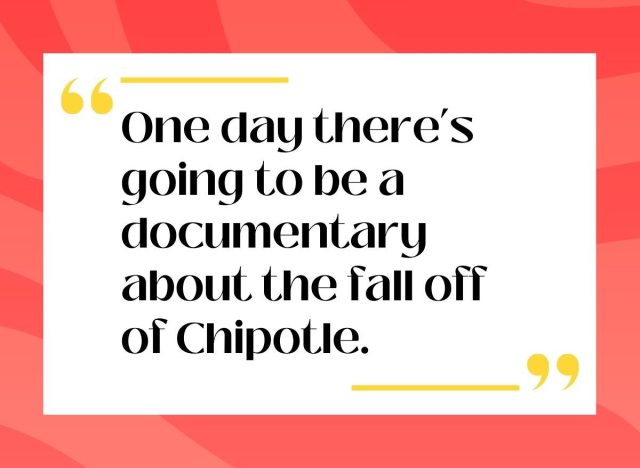
As a result of these hikes, some customers feel like they've been priced out of eating at Chipotle. Shifrin, whose Chipotle order has never changed, says he remembers paying $12 for his burrito bowl five or six years ago.
"Now I'm paying $18. Sometimes I pay $20," Shifrin said. (For the record, his go-to bowl includes brown rice, double chicken, fajita veggies, fresh tomato salsa, roasted chili-corn salsa, guacamole, romaine lettuce, cheese, and sour cream.)
Alongside the portion and price complaints, another essential side to the recent Chipotle backlash pertains to the food itself. Many customers have reported declines in Chipotle's food quality, complaining of hard rice, chewy meat, and guacamole that isn't as fresh as customers have come to expect. When speaking to Eat This, Not That!, Del Prete recalled receiving "stale" chips and guacamole that had developed a "brown crust" after ordering Chipotle for dinner one night a couple of years back.
Some of these complaints matched up with my own experience when I recently visited Chipotle for the first time in years. I ordered one bowl online, then when picking it up, ordered another bowl in person that was identical, apart from the type of salsa. The in-person bowl had noticeably more generous portions and weighed 279 grams more than the mobile bowl. While most of the food tasted perfectly fine, the fajita veggies I got on both meals were very overcooked, the guac on the mobile order was slightly brown, and some of the chips I got on the side were slightly stale.
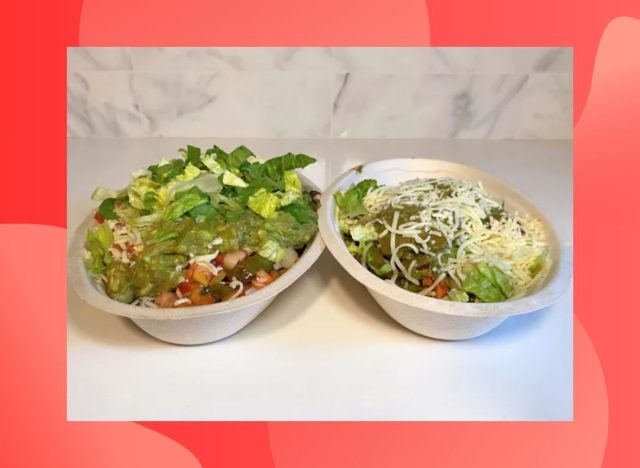
That's not to say that everyone's having bad or iffy experiences at Chipotle nowadays. There's plenty of evidence to the contrary on social media, thanks to the many customers who've shared pictures of tantalizing, overflowing bowls and massive burritos. Chipotle is also far from the only major restaurant chain that has been raising its prices and accused of serving up smaller portions in recent years.
However, the fact that Chipotle is getting so much more flack than some of its peers is probably because customers have come to expect so much more from Chipotle in terms of portions, quality, taste, and value.
"One day there's going to be a documentary about the fall off of Chipotle," TikToker @jackmacbarstool said in a viral April post about the chain.
Some diners, including Del Prete, are so fed up that they've sworn off eating there altogether. After receiving one too many "screwy" dinners from the chain, she eventually gave up on ordering from Chipotle in 2022.
"I haven't gone back, haven't ordered nothing," she said.
Shifrin, on the other hand, still eats at the chain about once a week, but says his "overall perception of Chipotle has gotten a little worse." The portion inconsistencies inspired him to create his own review website, StopTheSkimp.com, where customers can rate different Chipotle locations and other fast-casual restaurants based on how much they "skimp" on portions. Customers who visit the site can view ratings for all the Chipotle stores in their area to find the ones that are least likely to skimp.
"I would love to be able to actually make an impact," Shifrin said.
CEO Niccol recently responded to some of these complaints in a viral TikTok interview with Fortune. He stressed that the portion sizes have not gotten smaller, but suggested that customers who order in person can get workers to give them a little extra rice or pico by giving them a little head nod. However, this suggestion has resulted in plenty of memes and mockery online.
"I don't think he has been to a Chipotle as a regular customer," one TikToker commented on the video.
Despite It All, Chipotle Isn't In Any Danger
Through all the recent backlash, Chipotle has never faltered on its stance that it offers great food at a great value. And according to executives, the Chipotle brand is still resonating quite well with all types of customers.
"From the low-income consumer to the middle-income to the higher-income consumer, we're just seeing gains with all income cohorts," Niccol said during the company's April earnings call. "And when we ask the question, why is that? What we hear back from every group is, it's a great value proposition."
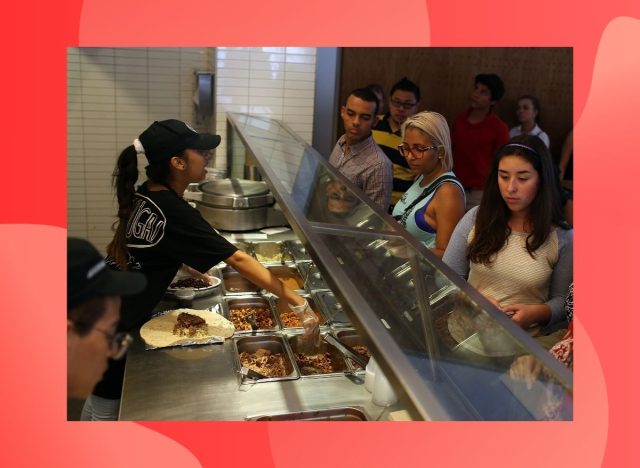
Chipotle is also expanding fast and thriving financially at a time when other chains such as KFC and Starbucks are struggling with declining sales.
"On the surface, they're doing well. Visitation trends are up and not everybody in the restaurant sector can say that," RJ Hottovy, head of analytical research at the foot traffic platform Placer.ai, said of Chipotle in an interview with Eat This, Not That!
Hottovy has seen some of the recent complaints about Chipotle, but says despite it all, "people continue to go to the restaurants." While there likely isn't one definitive reason to blame for Chipotle's recent issues, he suspects that the chain's decision to start offering mobile orders and seasonal menu items (i.e. Chicken al Pastor, Carne Asada) might have something to do with it.
"[When you] add new proteins or limited-time offers, you add complexity to the model. And when you do that, that opens up the door for potentially uneven experiences. I think it happens with most restaurant chains," he said.
When contacted for comment on the complaints highlighted in this story, Chipotle shared the following statement with Eat This, Not That!
"Our intentions are to provide a great experience every time, and our meals have always been completely customizable so guests can vocalize or digitally select their desired portions when choosing from the list of real ingredients. There have been no changes in our portion sizes, and we have reinforced proper portioning with our employees. If we did not deliver on our value, we want our guests to reach out so we can make it right."
But despite the company's assurances, more and more consumers seem to be looking for ways to bring back the spectacular Chipotle experiences they once enjoyed. Shifrin's site is continuing to gain traction and now brings in 30,000 users on average every month. And by avoiding the Chipotle locations that tend to skimp, "we'll be able to have a voice as Chipotle customers," he said.
"Rather than just complaining, we can actually do something about it," Shifrin said. "And then with that, we can leverage everyone's buying power to actually have a voice against Chipotle and make them start doing right by their customers."


